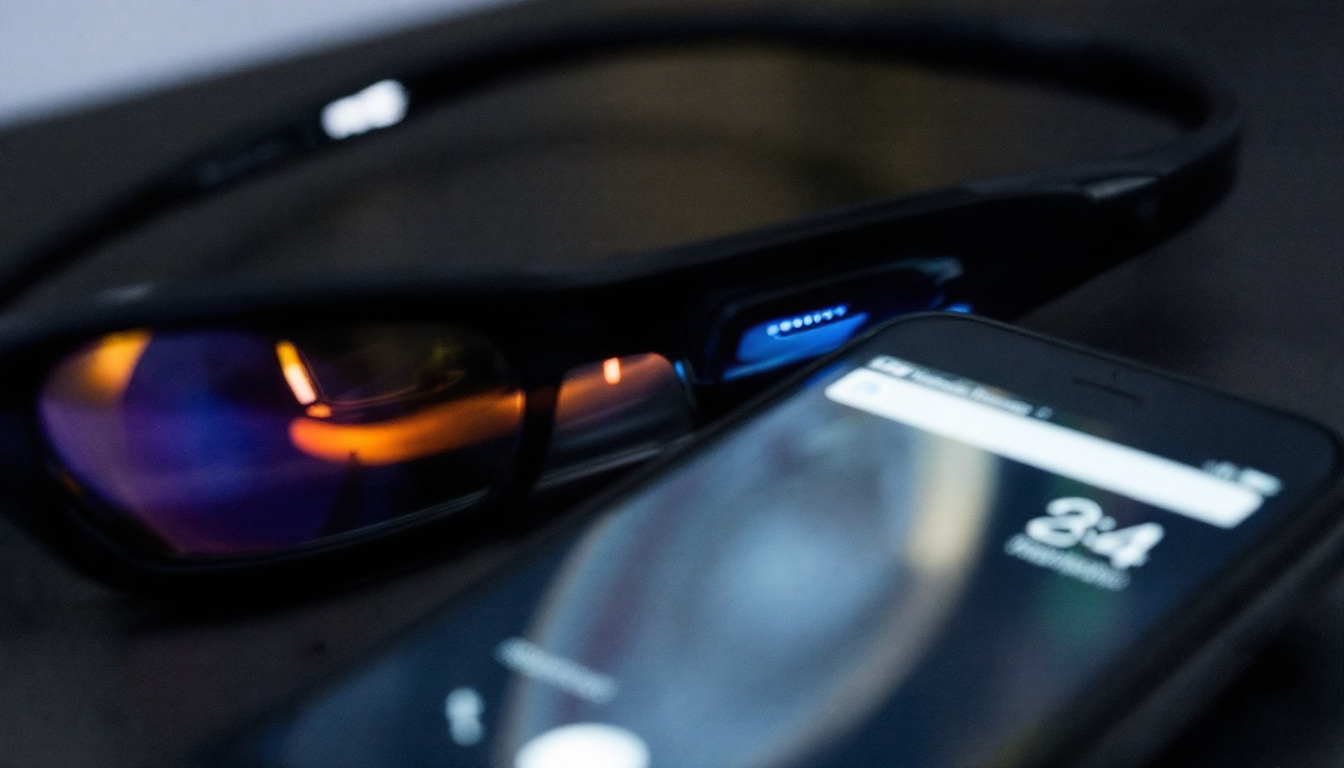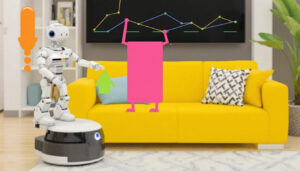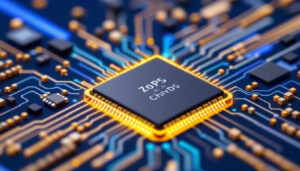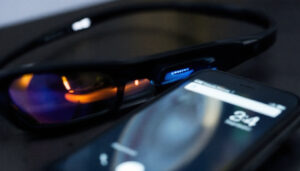Smart glasses are gaining attention as devices that could replace smartphones for daily tasks. Leading firms have invested in wearable technology that shifts communication, collaboration, and device control off traditional screens. For IT professionals, developers, electronics experts, and business leaders, the implications could be broad.
Replacing a phone with glasses is ambitious, but ongoing development brings the possibility closer. Users will need to assess if these devices deliver the functionality and security now expected from today’s mobile platforms. As practical applications begin to emerge, it’s important to monitor how smart glasses fit within enterprise strategies, development roadmaps, and workplace expectations.
“Smart Glasses Phone Review”
The Shift Toward Wearable Technologies
Wearable technologies have redefined how we interact with information, manage work, and connect with others. From early step counters to advanced multifunctional glasses, this progression signals a move toward devices that are lighter, more intuitive, and often invisible in daily routines. As innovation continues, businesses and individuals alike are reassessing what role these devices may play—in productivity, communication, and beyond.
Evolution from Smartwatches to Smart Glasses
 Photo by Kaboompics.com
Photo by Kaboompics.com
Wearables began as simple fitness trackers, offering step counting and heart rate monitoring as their core value. The rise of smartwatches brought in-app notifications, call handling, and direct voice commands, turning wrists into a communications hub. Each advancement has built on the last—integrating more sensors, connectivity options, and user controls.
In recent years, the emphasis has shifted again. Devices like smart glasses push boundaries by combining hands-free access to information with a lightweight, unobtrusive form factor. This change is not just about convenience; it represents a clear path from single-purpose gadgets toward always-available, context-aware computing. For an in-depth look at this journey, the science behind wearable fitness devices provides detailed insight into early milestones. Broader industry reviews, such as HP’s exploration of wearable technology, highlight how these innovations have led up to current smart glasses platforms.
Core Capabilities of Modern Smart Glasses
Modern smart glasses now offer significant features that closely mirror (and sometimes surpass) what a smartphone provides. Essential capabilities found in leading models include:
- High-definition displays and heads-up overlays for real-time information without a handheld screen.
- Integrated cameras for hands-free photo and video capture.
- Microphones and speakers enabling voice-controlled commands and discreet audio feedback.
- Connectivity via Wi-Fi, Bluetooth, and in some cases cellular networks.
- On-board processors that power custom apps, AR overlays, and edge computing—minimizing lag and dependence on other devices.
- Security features, including biometric authentication and encrypted communication, aiming to deliver phone-level protection.
These hardware improvements are matched by software evolution. The latest operating systems for glasses manage notifications, calls, messages, and navigation directly in a user’s field of view. Many are designed for cross-platform compatibility with mobile and desktop systems. For developers, this means potential for apps and services that can move fluidly between devices, a capability explored more in resources on cross-platform compatibility.
Notably, as AkiaTech’s analysis of wearable technology shows, software tailored for smart glasses is quickly catching up with, and sometimes surpassing, what is available for phones.
Integration With Daily Life and Industry
Smart glasses are moving quickly into regular professional use. Several key areas demonstrate their integration:
- Enterprise and Workforce: Companies, especially in logistics, healthcare, and manufacturing, have adopted smart glasses for hands-free workflows, remote support, and on-site training. Workers receive step-by-step instructions overlaid in their vision, reducing errors and improving speed.
- IT and Development: For IT professionals, these devices become testing grounds for new ways to access and manage data, attend meetings, or troubleshoot remotely without breaking focus on current tasks.
- Business and Productivity: In sales or client engagement scenarios, smart glasses allow discreet access to notes or schedules while maintaining eye contact and engagement.
- Everyday Contexts: Early adopters use smart glasses for navigation, real-time translation, and notification triage, allowing users to stay connected while avoiding the distractions of a handheld phone.
Business cases reported by industry publications describe marked improvements in operational efficiency and satisfaction. Enterprise users consistently highlight reductions in training time and lower error rates as key benefits.
For a comprehensive look at how wearables are shaping business and daily life, entries such as The Future Of Wearable Tech provide perspective on long-term trends and the broader adoption seen across various fields.
The trajectory from early trackers to advanced eyewear signals ongoing momentum. The combination of practical value and technical sophistication is leading more organizations and individuals to consider glasses not as novelty, but as a logical next step in personal and work technology.
Technical Foundations: What Makes Smart Glasses Possible?
The leap from smartphones to smart glasses requires advances in core hardware and wireless infrastructure. Understanding these technical foundations is essential for IT professionals, developers, and business leaders considering how glasses may fit into enterprise strategy. Here, key advances in display technologies, battery systems, and device connectivity are enabling smart glasses to move from prototype to potential daily driver.
Display Innovations and Visual Interfaces
Recent developments in transparent and immersive visual interfaces are central to smart glasses adoption. Today’s devices use lightweight waveguides, microLED, and laser-based systems to display information in a user’s field of view. The main goal is to combine high image quality with minimal distraction and power use.
 Photo by Andrea Piacquadio
Photo by Andrea Piacquadio
Key advances include:
- Full-color laser modules: These new components provide high brightness and color fidelity without adding bulk or draining batteries. Innovations like TDK’s modules represent a leap in making real-time augmented reality overlays crisp and usable in varying lighting conditions.
- Improved transparency: Modern display films minimize visual obstruction, making glasses suitable for all-day use without compromising natural vision.
- Embedded sensors: Advanced eye-tracking and gesture control sensors allow for seamless interface control without relying on voice commands or external hardware.
Product reviews from industry showcases, such as the most advanced smart glasses at CES 2025, show how these innovations are making displays both more practical and appealing for technical users.
Battery Life and Power Management
Power constraints have long limited wearable potential. Advances in lithium-ion cell chemistry, energy-efficient processors, and smart power allocation are pushing the limits of all-day performance.
Key developments:
- Energy-dense cells: Modern lithium-ion batteries pack more power into lighter, safer formats, extending device uptime.
- Quasi-solid battery designs: These provide safer operation, with reduced overheating and degradation, which is crucial for glasses worn close to the skin.
- Smart charging and usage optimization: Integrated microcontrollers and AI-driven power management can prioritize critical functions and dim displays when not needed.
In 2025, new battery innovations include experimental quasi-solid and sulfur-substituted chemistries, advanced recycling for sustainability, and better regulatory frameworks. These changes collectively support smarter, safer power in ultra-portable formats. A recent analysis on battery breakthroughs to watch in 2025 details these emerging solutions, while guidelines for battery safety and standards provide further insight for technical procurement and planning.
Connectivity and Integration With Other Devices
Reliable, fast wireless integration underpins the promise of phone-free smart glasses. New communication protocols, including 5G, Wi-Fi 6E, and Bluetooth Low Energy, deliver higher speeds, lower latency, and greater security.
Highlights include:
- 5G cellular integration: Provides real-time cloud access for data-heavy tasks like augmented reality collaboration or instant translation.
- Wi-Fi 6E: Delivers stronger connections in crowded environments and reduces interference, essential for stable performance in shared workspaces or public venues.
- Bluetooth Low Energy (BLE): Maintains seamless device connections with minimal power draw, supporting peripherals and smart assistants.
The breakdown of wireless communication technologies for wearables provides a technical explanation of these protocols’ relative benefits for connectivity, reliability, and energy usage. For enterprise adoption, certification and compliance remain key for ensuring safe, standards-based integration with existing device fleets. Additional discussion on emerging wireless standards can inform planning for future upgrades and expansions.
Together, these innovations in display, battery, and connectivity make the vision of smart glasses as phone replacements possible. Their maturation directly impacts the readiness of these devices for professional and everyday use.
Security, Privacy, and User Control in Smart Glasses
Smart glasses offer a shift in personal technology, but expanded capabilities mean increased scrutiny of how data and user identity are protected. These devices bring cameras, microphones, location tracking, and data access into daily routines. That level of integration raises concerns for security, privacy management, and user autonomy. It is vital for technology professionals and business leaders to understand how leading platforms address authentication, protect sensitive data, and respond to the new risks of constant connectivity.
Biometric and Authentication Features
Modern smart glasses are built with strong authentication at the forefront. Traditional PIN codes are no longer enough when sensitive corporate data, personal communication, and location history are accessible through a simple voice command or gesture.
The latest models often include:
- Biometric sensors: Eye-tracking, iris scans, or facial recognition help validate identity quickly, even when users are wearing the glasses all day.
- Multi-factor authentication: Some platforms combine biometric checks with device-paired codes or mobile confirmations to add a second layer of security.
- On-device processing: Sensitive authentication data is often processed locally, not sent to cloud servers, reducing the risk of interception.
For organizations considering deployment, the expectation is to match or exceed the security standard set by smartphones and laptops. Making use of biometric authentication also aligns with broader trends in access control seen in other regulated environments. More information about next-generation security protocols and requirements in electronics is available at NextGen Security.
Data Privacy and Protection Policies
Privacy concerns escalate when smart glasses continuously collect, store, and sometimes stream personal data. Effective privacy controls need to be clear, accessible, and flexible enough to address the needs of both end users and enterprises.
Companies address privacy in several ways:
- Transparent privacy policies: Major platforms publish how they handle, use, and share personal information collected from smart glasses.
- Customizable permissions: Users can often choose what data (like GPS, microphones, or photos) is available to apps or transmitted to third parties.
- End-to-end encryption: Communication between glasses and other devices, or with cloud services, is encrypted to protect against unauthorized access.
- Regular audits and compliance: Most manufacturers implement regular checks to comply with data protection laws such as GDPR, HIPAA, or similar frameworks adopted globally.
Many privacy risks are not unique to smart glasses, but the always-on nature of these devices brings heightened concern. Practical guidance on data privacy in wearable tech—including best practices for settings and compliance—may be found in the blog post Wearable Tech: Navigating Privacy, Compliance, and Misinformation. Guidance for users on safely managing privacy on digital wearables is available from Wearable devices and your privacy.
Managing Constant Connectivity and Surveillance Concerns
Smart glasses are by nature connected to networks and, often, cloud platforms. This persistent connection unlocks their potential but also poses new risks—continuous tracking, unauthorized audio/video recording, and exposure to surveillance.
Technological and policy strategies in this area include:
- Network isolation: IT departments can place smart glasses on separate networks to limit access and reduce exposure in sensitive environments.
- Activity logging and user notifications: Users and admins have access to logs showing when data is accessed, what is recorded, and which applications use the hardware’s sensors.
- Physical controls: Some smart glasses feature visible indicators (like LED lights) when recording or streaming is active, which protects both users and bystanders.
For companies integrating smart glasses into the workplace, these controls must be balanced with usability and compliance. The same standards that apply to digital privacy and device management in other contexts are relevant to smart glasses and should be included in business technology planning. For deeper insight into balancing connectivity and privacy, consider best practices highlighted in resources on digital device management and policy.
By understanding authentication, privacy policies, and connectivity risks, organizations and individuals can shape a better balance between convenience and protection in adopting smart glasses platforms.
 Photo by Antoni Shkraba Studio
Photo by Antoni Shkraba Studio
Current Barriers and Future Outlook
Despite steady progress in smart glasses technology, several barriers slow their journey toward replacing smartphones. Modern glasses face challenges not only in hardware and software, but also in achieving social acceptance, establishing a robust developer ecosystem, and meeting the prerequisites for widespread adoption. Examining each area from the perspective of IT professionals, developers, electronics experts, and business leads provides a clear view of what remains to be solved.
Hardware and Software Limitations
Smart glasses rely on compact, integrated systems to deliver features expected from a modern smartphone. This creates specific limitations:
- Display Quality and Field of View: Current optical modules restrict how much information users can see at once. High-brightness displays that remain readable outdoors add extra power demands and physical bulk.
- Battery Life: Small form factors reduce space for batteries. Many models offer only a few hours of continuous use with full features enabled.
- Processing Power: Glasses lack the thermal headroom and chipsets present in phones. Running advanced AR or real-time AI can cause heat and performance throttling.
- Input and Controls: Voice commands, gesture detection, or swipe panels are improving, but none match the versatility of a touchscreen. Eyes-free navigation or precise input for complex tasks remains difficult.
- Software Maturity: App ecosystems are still limited compared to Android and iOS. Many core apps lack full feature sets or consistent performance across devices.
Ongoing research into energy-efficient processors and adaptive displays offers some promise, but for now, these technical limitations keep smart glasses in a supporting role rather than a primary phone replacement.
Social Acceptance and Workplace Readiness
Outside technical hurdles, smart glasses face scrutiny from the wider public and employers alike. Without broad acceptance, adoption will stall, even with perfect hardware.
- Privacy Concerns: Visible cameras and always-on microphones spark fears about recording and surveillance. Such concerns have slowed product launches in the past.
- Fashion and Comfort: Glasses must look and feel natural. Bulky or unfamiliar designs can discourage everyday use.
- Trust and Etiquette: Wearing connected eyewear during meetings, social gatherings, or in public can create unease. People expect clear visual signals when recording is active.
- Workplace Policies: Many businesses restrict smart glasses over intellectual property or data loss risks. Adoption depends on alignment with internal policies.
Progress in these areas depends on better design and strong norms for privacy and use. Understanding consumer trends in design can help manufacturers and employers predict where resistance or acceptance may arise.
Developer Ecosystem and Application Potential
The growth of smartphones relied heavily on the breadth of their app marketplace. For smart glasses, developer engagement will make or break their utility.
- Limited Tools and APIs: New platforms often lack mature SDKs or clear documentation. This slows app development and integration.
- Fragmentation: Different glasses use unique operating systems, making it hard for one app to serve every device.
- Compatibility: Running phone-grade applications requires resources beyond the reach of most glasses today. Streamlined, context-sensitive apps are needed.
- Business Value: Enterprises need reliable, secure integrations with existing systems. Only with a proven business case do businesses invest in development for new categories.
Device comparisons found in discussions about iPhone 2025 vs Android flagships show how platform consistency and developer support drive mainstream utility. Developers and organizations are waiting for clear, stable standards before prioritizing investments.
What Needs to Change for Mainstream Adoption?
Smart glasses will only replace phones if several critical issues are addressed, spanning engineering, culture, and marketplace factors:
- Significant Advancements in Hardware: Lighter batteries, improved optics, and powerful chipsets must fit into a small frame. Thermal management is key to daily wear.
- Widely-Available, Stable Software: Operating systems and app frameworks must match the reliability seen in established mobile platforms.
- Societal Comfort and Trust: Clear visual cues and industry standards for privacy will help ease concerns. Workplaces need guidelines that balance utility and compliance.
- Clear Business and Consumer Value: Use cases must show tangible efficiency gains in professional environments, as well as convenience in personal settings.
- Stronger Ecosystem and Integration: A thriving marketplace for apps, tools, and peripherals will encourage both adoption and innovation.
Only with progress in these areas will smart glasses move beyond early adopters and niche use cases. Organizations are watching closely to see when the right combination of technical maturity, social acceptance, and applications will make glasses a real alternative to the phone.
Comparing Smart Glasses With Smartphones: Will They Really Replace Our Phones?
 Photo by Jakub Zerdzicki
Photo by Jakub Zerdzicki
The conversation around smart glasses as a full replacement for smartphones is growing. For professionals in IT, development, and business, it is necessary to weigh the unique benefits and limits each technology brings. Some smart glasses promise an experience as integrated and essential as the smartphone. But how do they compare in actual utility and performance?
Unique Advantages of Smart Glasses Over Phones
Smart glasses offer new ways to interact with digital content. They use heads-up displays and enable hands-free control, which changes how people access information at work and throughout the day. Several key advantages stand out:
- True Hands-Free Use: Smart glasses let users take calls, access data, or follow instructions without ever needing to reach for a device. This is important in environments where multitasking is required.
- Immediate Information Access: Notifications, reminders, and directions appear directly in a user’s line of sight, reducing distraction and improving speed.
- Contextual Awareness: Built-in sensors, cameras, and microphones collect real-time data to adjust content based on surroundings. This feature supports workplace safety and productivity by recommending actions or flagging hazards.
- Discreet Communication: Users can send or receive messages, or access contactless authentication, in a low-profile way—beneficial during meetings or client interactions.
Reports comparing augmented reality on glasses and phones show how AR glasses deliver superior mobility. For many enterprise scenarios—field repairs, training, logistics—this advantage saves time and reduces errors. Wearables also keep users engaged with the real world rather than drawing their focus away.
Limitations and Compromises
Despite notable strengths, smart glasses are not without compromise. The main challenges limiting their replacement potential include:
- Display Constraints: Glasses offer smaller and sometimes less detailed screens compared to smartphones. Reading long emails or editing spreadsheets remains impractical.
- Input Methods: While voice and gesture controls are evolving, they lag behind the flexibility and speed of touchscreens. Entering text or performing multi-step tasks is still simpler on a phone.
- App Ecosystem: Smartphones provide access to mature, standardized app markets with broad compatibility. Most glasses support only curated apps, which narrows their scope of use.
- Battery Life: Due to small batteries, intensive use—like video streaming or AR overlays—quickly drains power. Phones continue to outlast glasses for heavy users.
- Style and Comfort: All-day wearability is not guaranteed. Current designs can feel bulky, or may not fit well with eyewear prescriptions or safety gear.
The future of AR glasses versus smartphones depends not only on technical progress but also social readiness to accept eyewear as a daily standard. Until these issues are resolved, glasses fit best as companion devices.
Blended Futures: Will They Coexist or Compete?
Industry analysis indicates that smart glasses and smartphones will likely coexist, each filling distinct roles. Near-term adoption patterns suggest:
- Task-Specific Integration: Smart glasses excel for focused tasks—like remote support or inventory checks—where speed and hands-free access matter. Phones remain dominant for content creation, browsing, and multi-app workflows.
- User Choice and Context: Many professionals use both, switching devices based on setting or need. Businesses deploying wearable technology often provide glasses alongside traditional phones for maximum flexibility.
- Ecosystem Evolution: As hardware and software mature, integration between devices will deepen. Seamless handoff between your phone and your glasses could soon be standard.
A recent market review on AR and AI smart glasses highlights rapid growth in feature sets and versatility—helping close the gap but not fully bridging it for general phone replacement.
Within organizations, decision-makers must weigh these trends against their own requirements. Smart glasses offer new possibilities, but total phone replacement remains a longer-term prospect that depends on ongoing innovation and acceptance. Those seeking a deeper look at next-generation device comparisons and feature analysis can explore the related discussion on side-by-side feature analysis for professionals.
Conclusion
Smart glasses are advancing through continuous improvements in hardware, software, and usability. Their greatest potential lies in hands-free access to information and efficient workplace integration. Yet technical challenges such as display limitations, battery life, and input issues remain substantial. Broader acceptance also depends on public trust in security and privacy, which is shaped by features like biometric authentication and strong encryption, as outlined in next-generation consumer electronics security.
In practice, smart glasses are not set to fully replace smartphones in the immediate future. Instead, they are positioned to become a valuable complement. For IT leaders, developers, and business professionals, the strategic move now is to monitor advancements, pilot use cases, and invest in flexible ecosystems that can adapt as technology matures.
The momentum behind wearable innovation signals that glasses may soon become a regular tool, though as part of a wider suite of solutions. Business planners and technology strategists who stay informed and prepared will be best positioned to benefit from this shift.
Thank you for reading. If you have insights from your own experiences or questions on smart glasses integration, share your perspective below.








